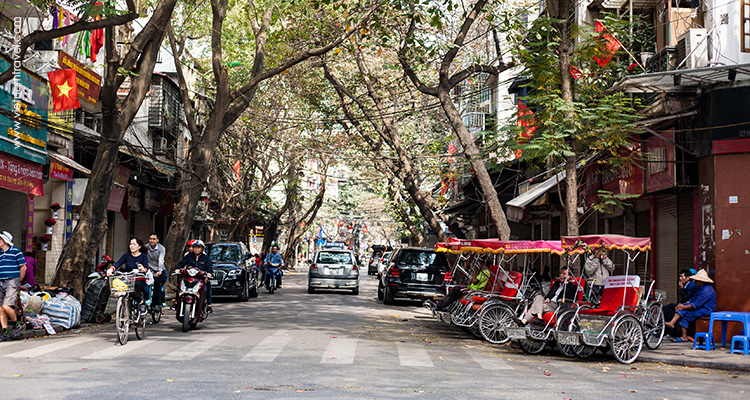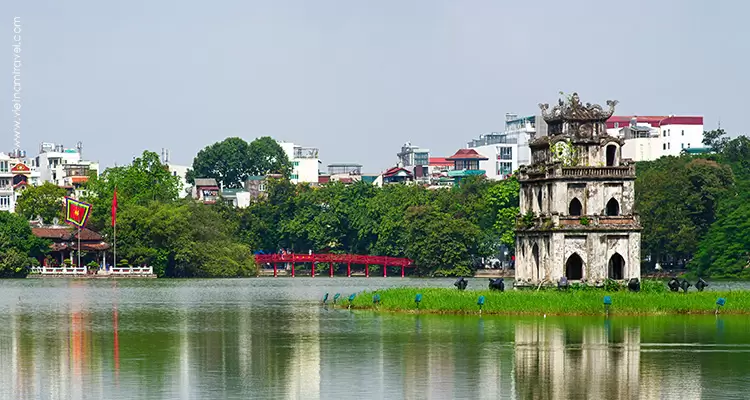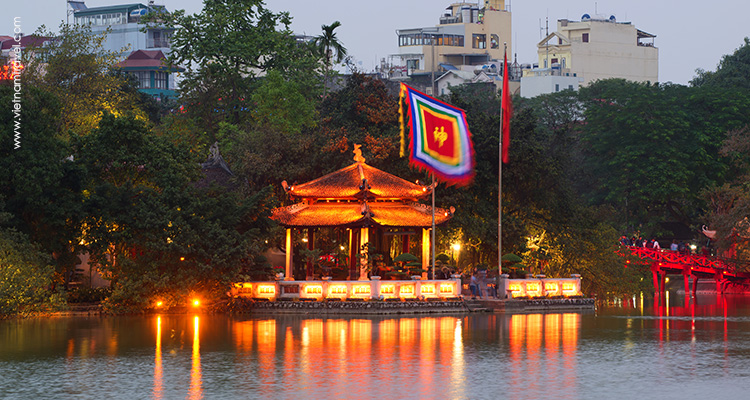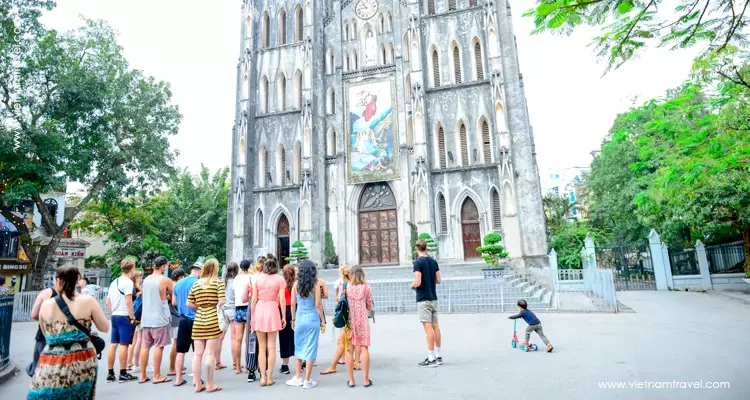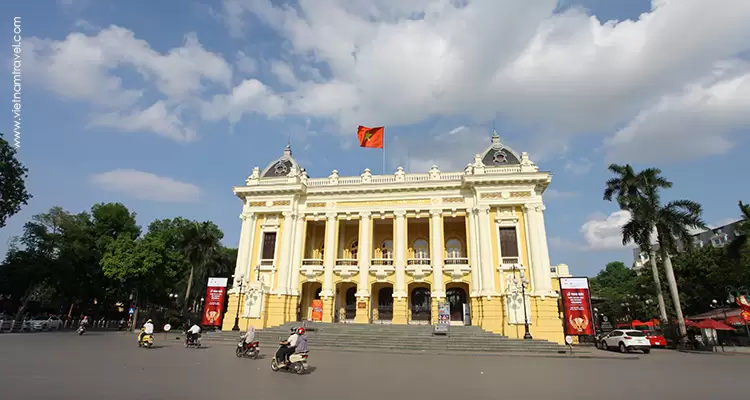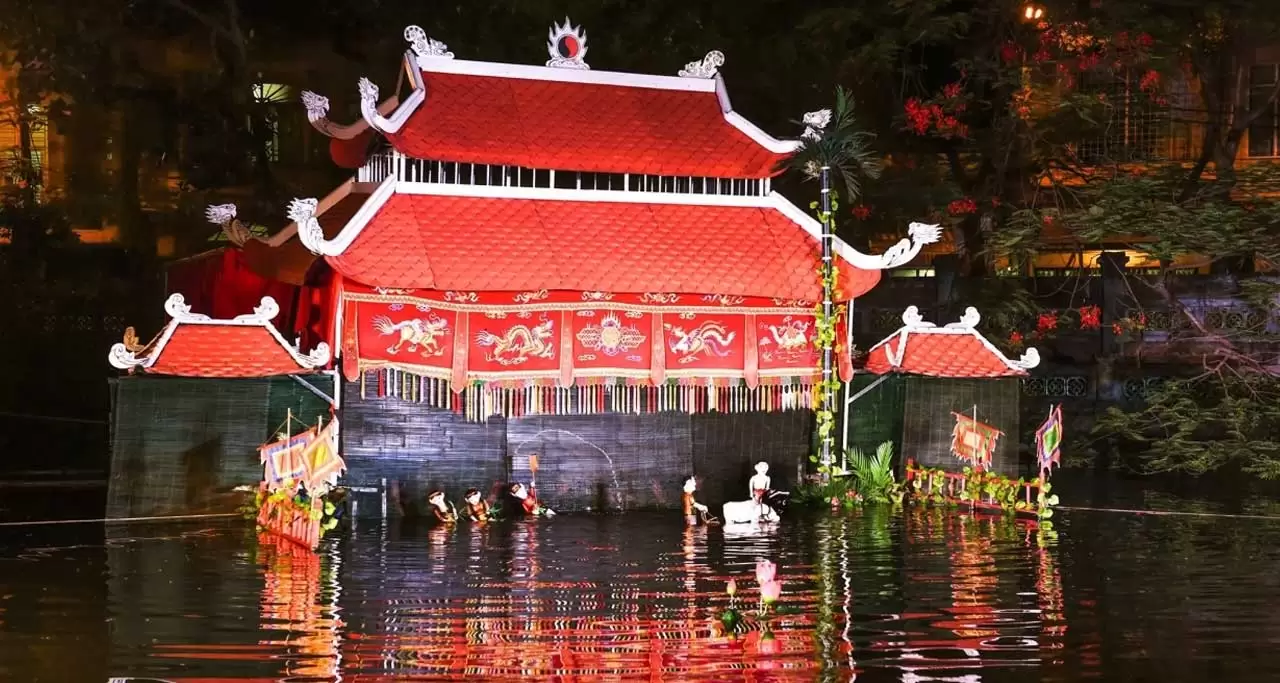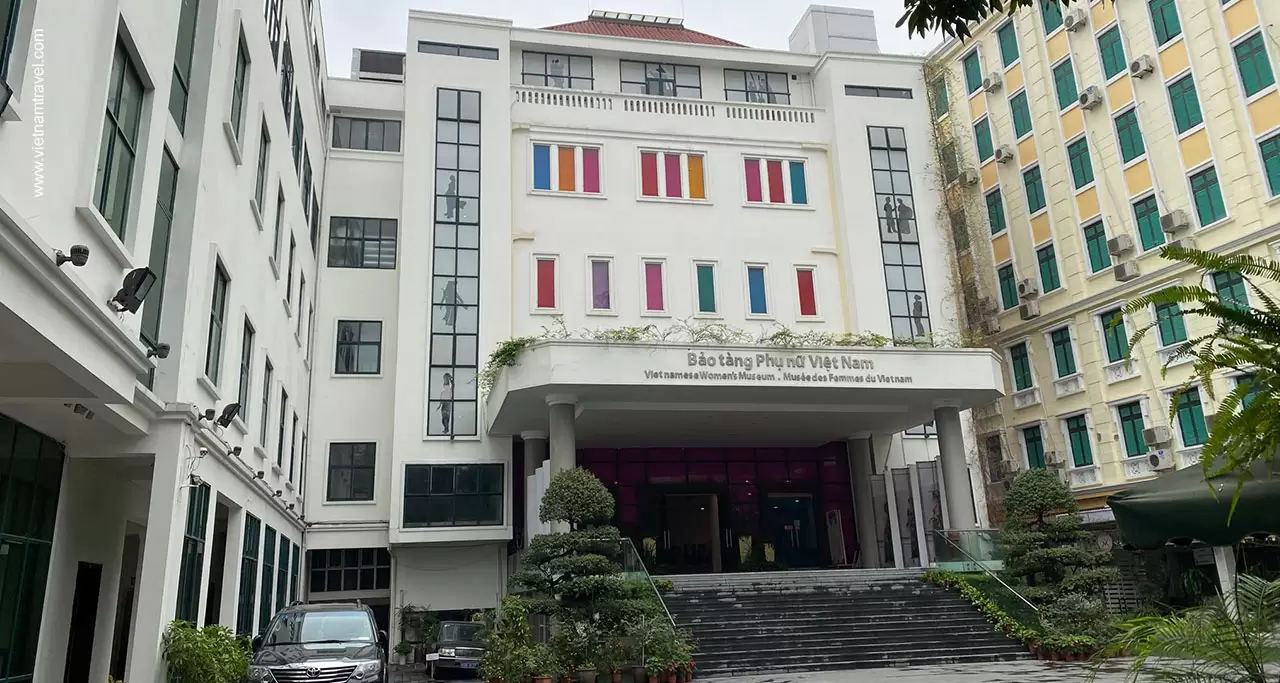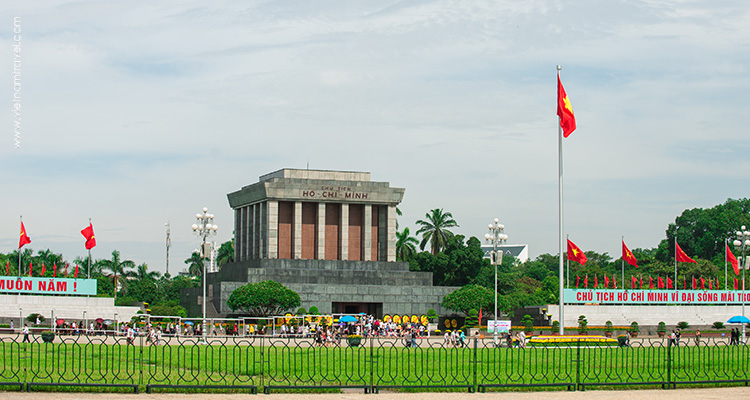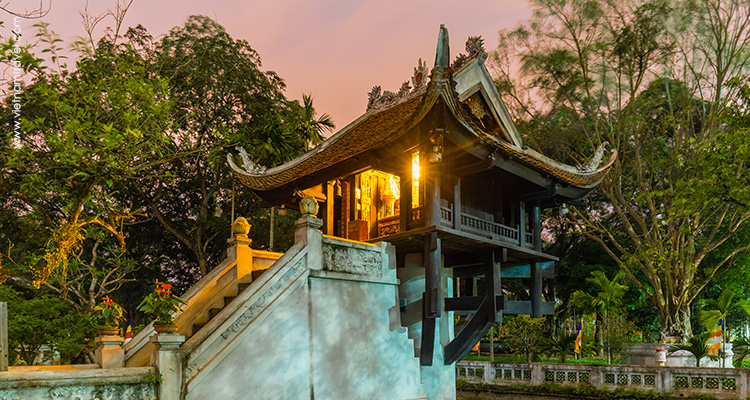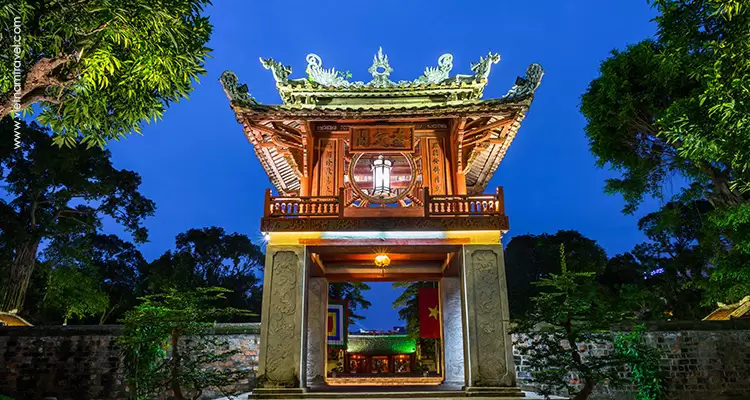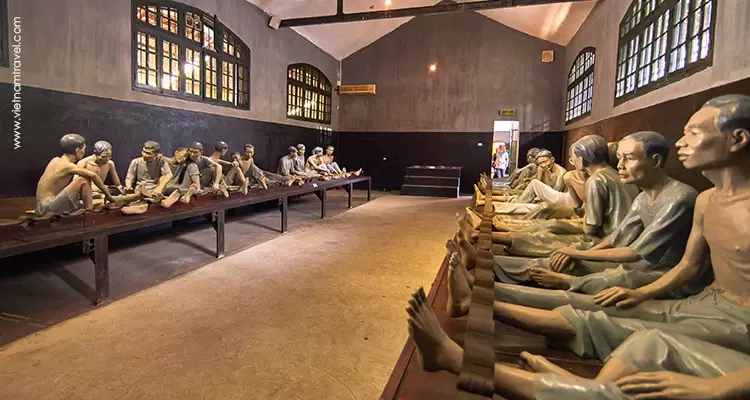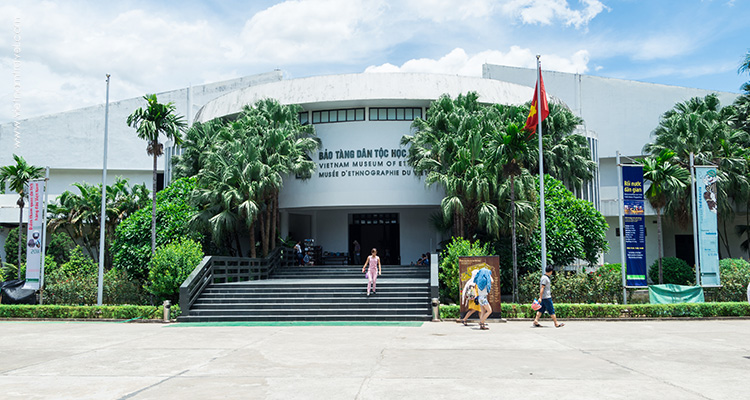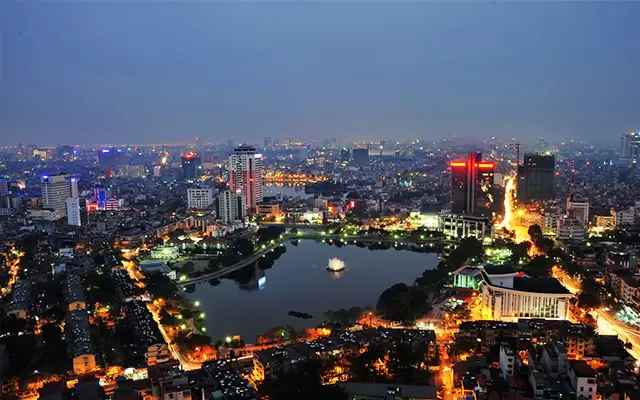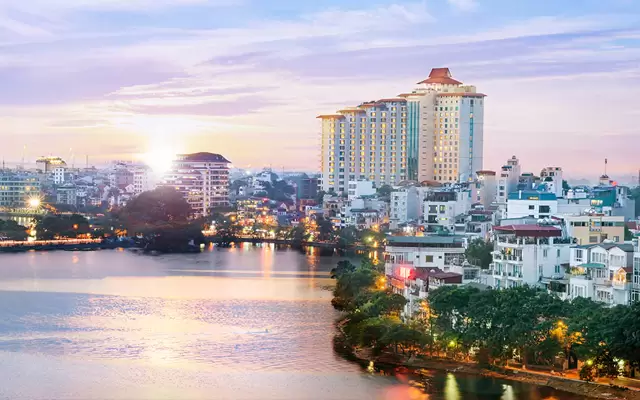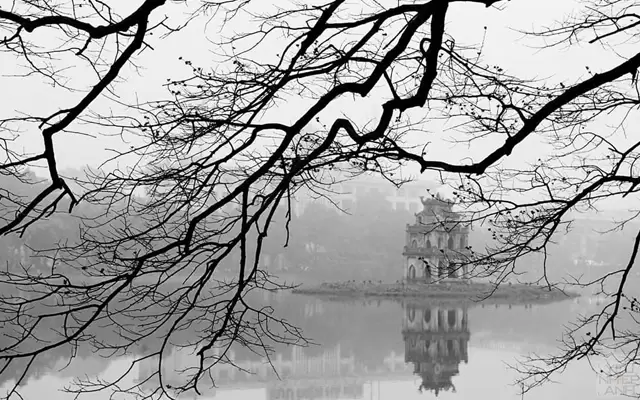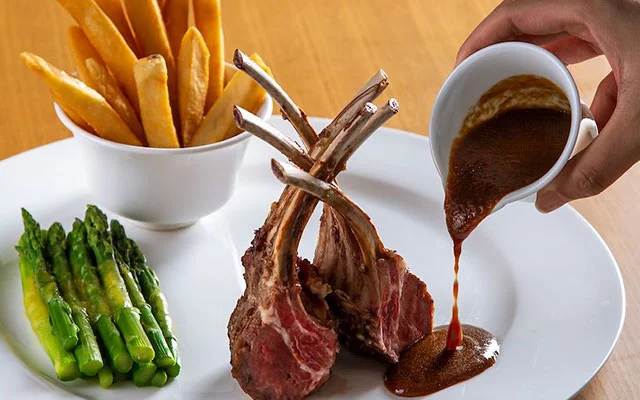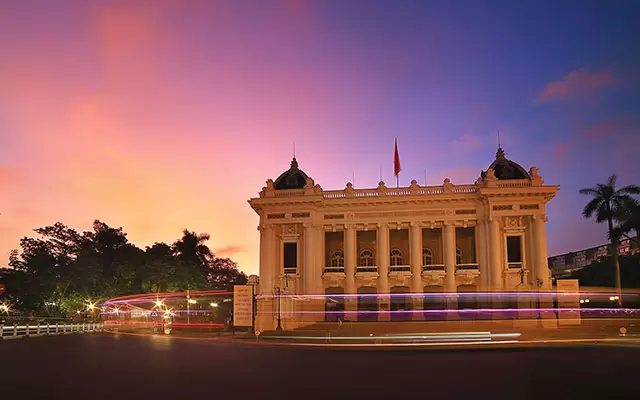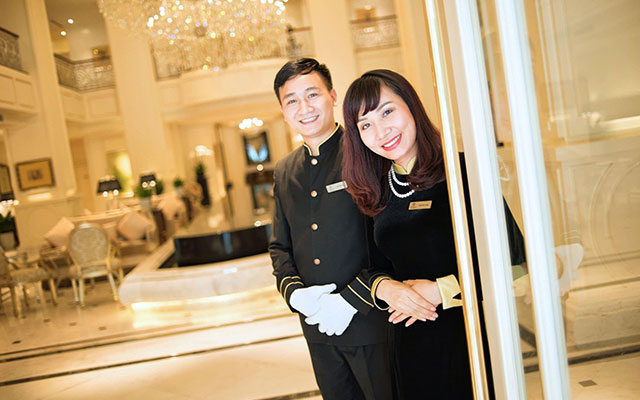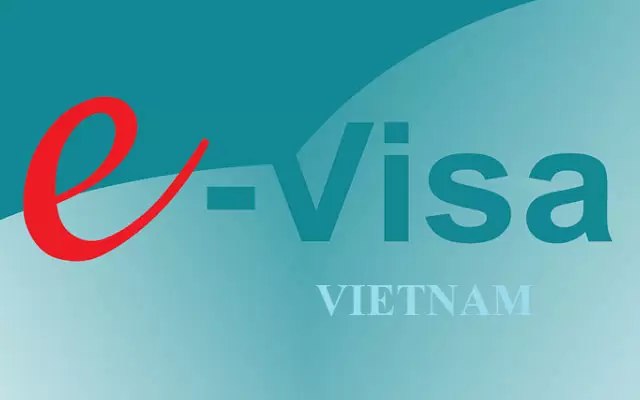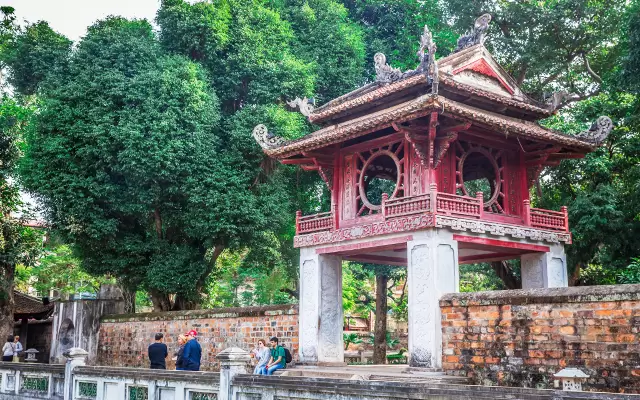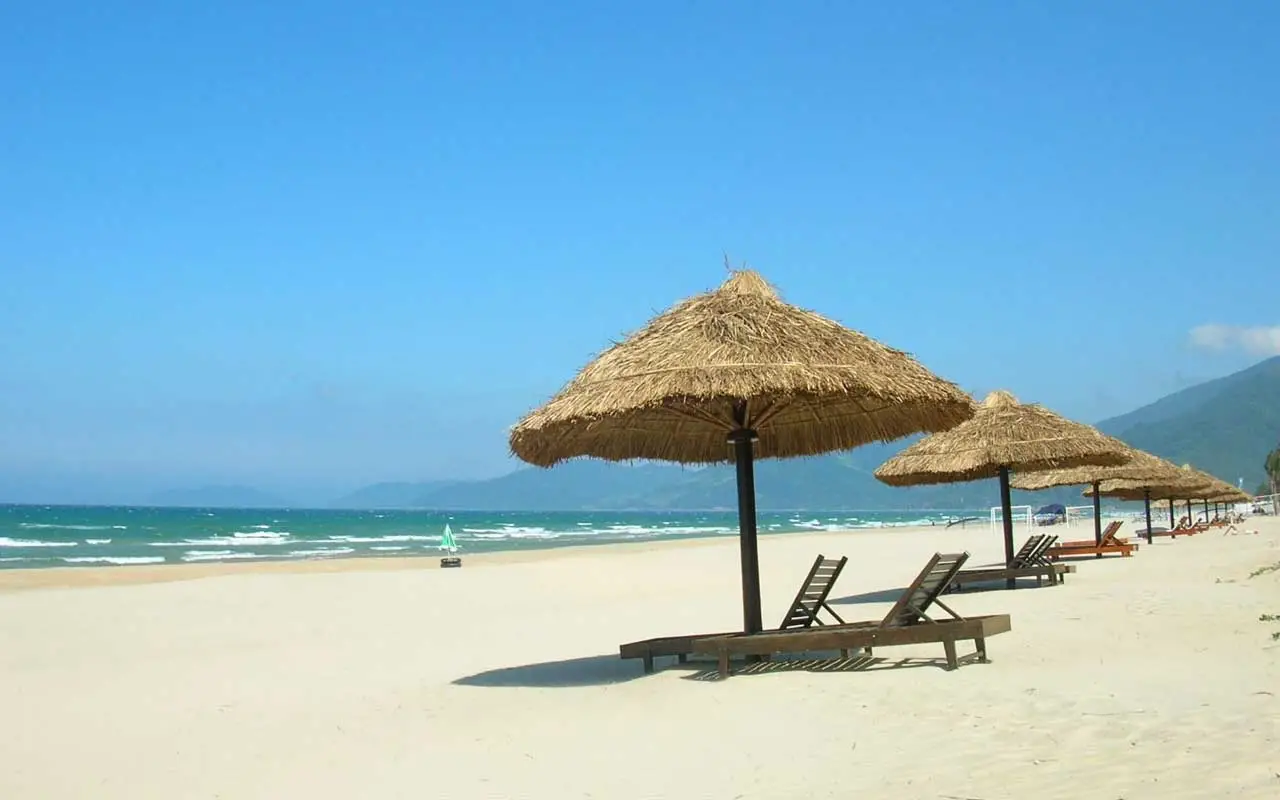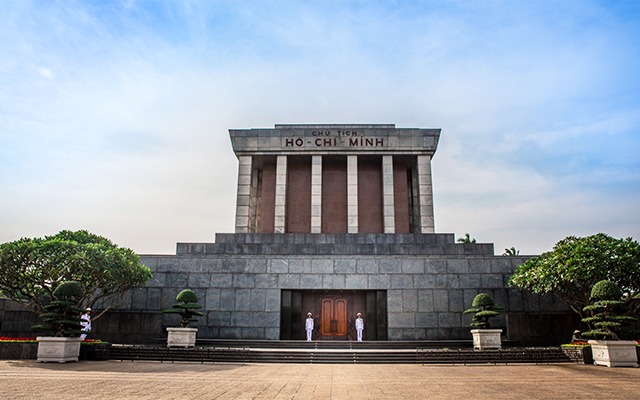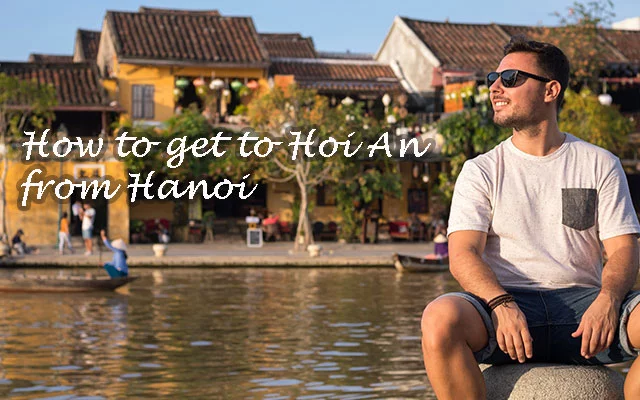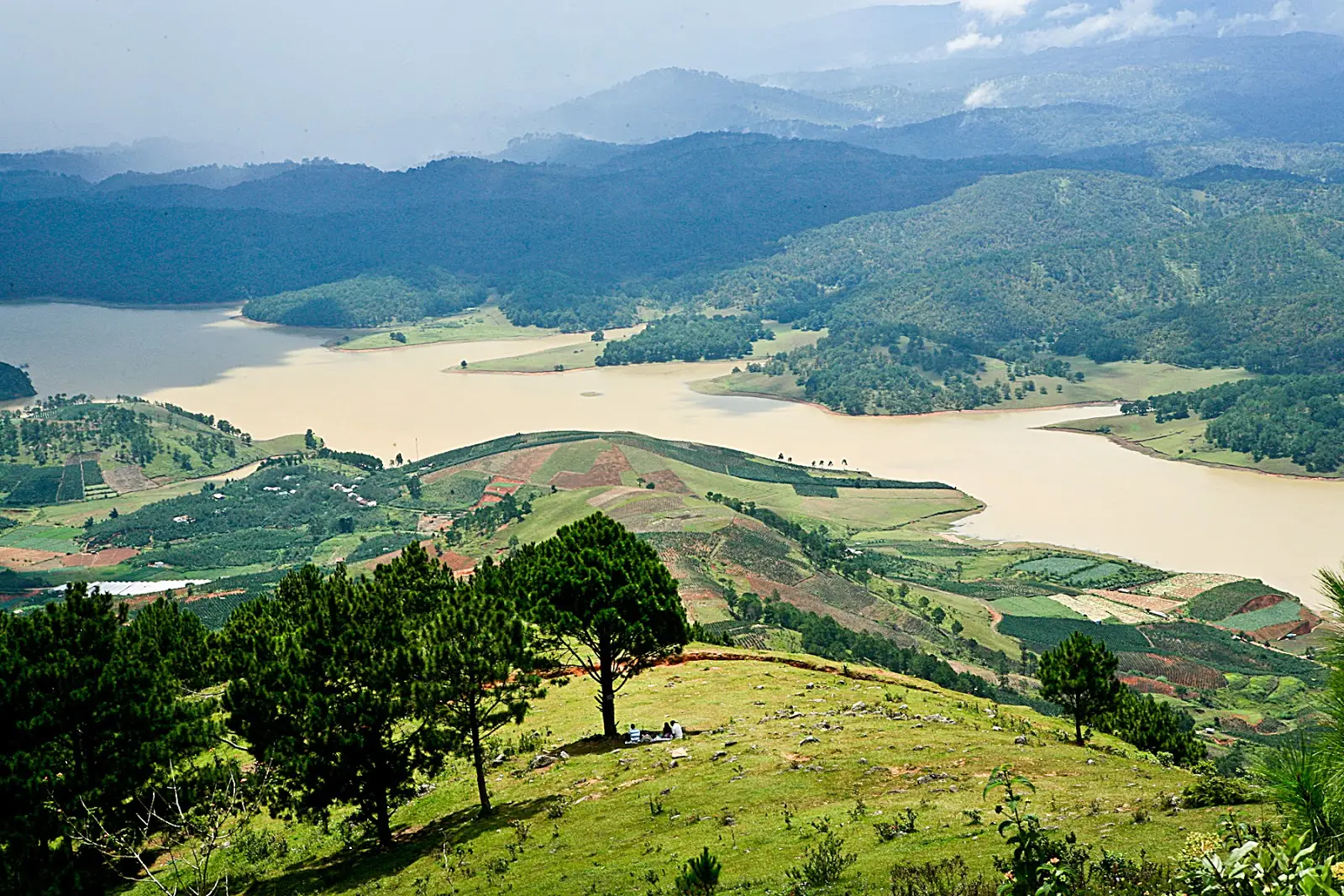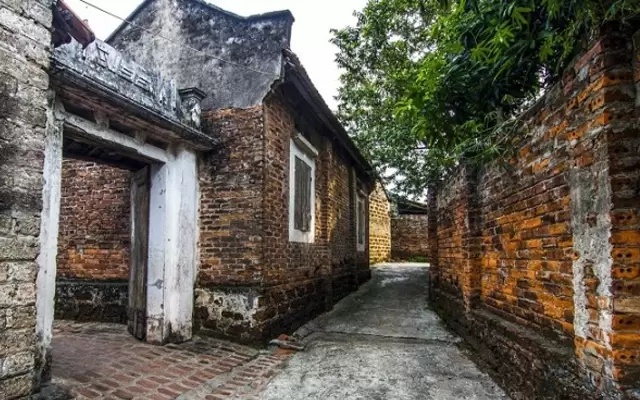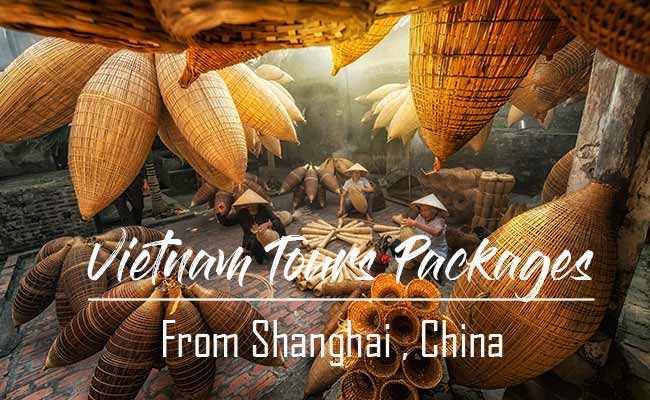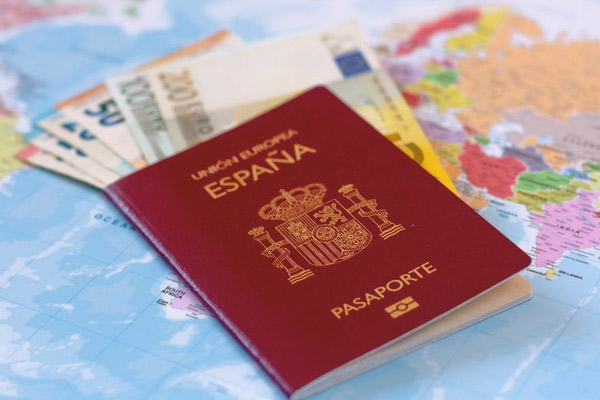25 Best Things to Do in Hanoi – Top Sightseeing & Activities
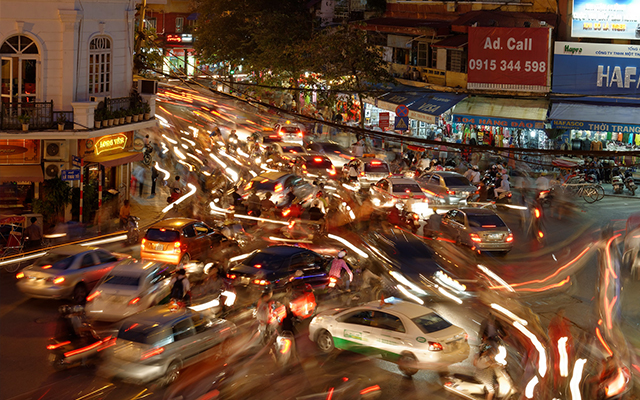
Discover the best things to do in Hanoi with our Expert Guides. There is an endless list of activities to do in Hanoi, Vietnam’s capital city. This captivating place has engraved its way through history, defeating everything that has been tossed at it. Hanoi has retained the blast of the Indo-Chinese armies, the French colonial era and furthermore endure the Vietnam War. Today this amazing city has a tremendous mix of both the ancient and the modern. It’s this magnificent mix, in addition to a huge number of things to do in Hanoi, which makes visiting the city such a delight. In case you’re considering where to go in Vietnam, ensure Hanoi is on your list!
Here are the top 25 best things to do in Hanoi, Vietnam.
Table of Contents
- 1. Wander The Streets of The Old Quarter
- 2. Take a stroll around Hoan Kiem Lake
- 3. Visit Ngoc Son Temple
- 4. Shopping at Dong Xuan Market
- 5. See St Joseph’s Cathedral in the Old Quarters
- 6. Watch A Show at The Opera House
- 7. Watch a Water Puppet Show
- 8. Don’t miss the Vietnamese Women’s Museum
- 9. Visit the Ho Chi Minh Mausoleum
- 10. Visit nearby One Pillar Pagoda
- 11. Visit The Temple of Literature
- 12. Explore Hoa Lo Prison (The Hanoi Hilton)
- 13. Appreciate the works in the Vietnam Fine Arts Museum
- 14. Learn about ethnic history at the Vietnam Museum of Ethnology
- 15. Visit Thang Long Imperial Citadel
- 16. Enjoy some peace and quiet at West Lake
- 17. Admire Tran Quoc Pagoda
- 18. Check out the 4-kilometer ceramic mosaic wall
- 19. Take in the views from Long Bien Bridge
- 20. Make your own pottery at Bat Trang Ceramic Village
- 21. Eat all of the local food!
- 22. Drink Bia Hoi with the locals (One of the most fun things to do in Hanoi!)
- 23. Try the egg coffee, please!
- 24. Find a rooftop bar
- 25. Join a cooking class
1. Wander The Streets of The Old Quarter
The Old Quarter is one of the two most notable areas in Hanoi. It is a business center and also a remarkable spot among tourists. While discovering the Old Quarter of Hanoi you must choose the option to stand up to the traffic as local people would do and encounter the history on the go.
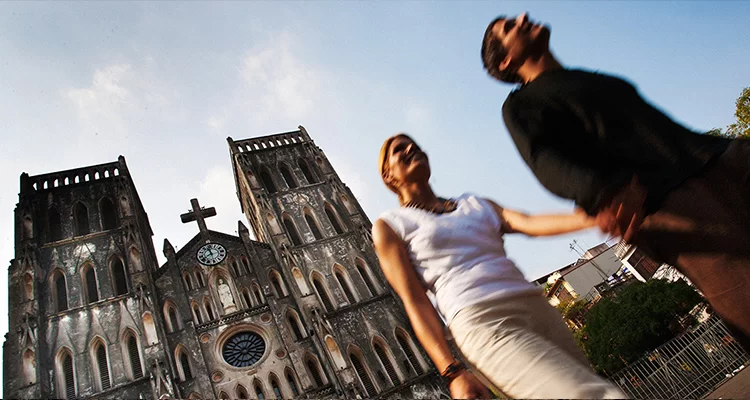
Stuffed with French colonial architecture, pagodas and Buddhist sanctuaries you’ll need to lose all sense of direction in its streets. The boulevards convey names of the business that were set up more than 1,000 years ago. The greater part of these area were craft shops, yet today a ton of them transformed into something business-related and up-to-date. Indeed, even now you can in any case discover shops owned by people in the same families for a considerable length of time, selling unique Vietnamese handcrafted items. Hope to see loads of bistros, cafés, boutiques, exhibitions and bars even in this antique area.
2. Take a stroll around Hoan Kiem Lake
This lake got its name (Lake of the Restored Sword) from a legend. A story in ancient times that asserted the Heaven-sent Emperor Le Thai To a sword with supernatural properties. He utilized that sword to expel the Chinese from Vietnam. When the war finished, a giant golden turtle took the sword and dive into the lake to restore the sword to its celestial proprietors, so the name Lake of the Restored Sword came about.
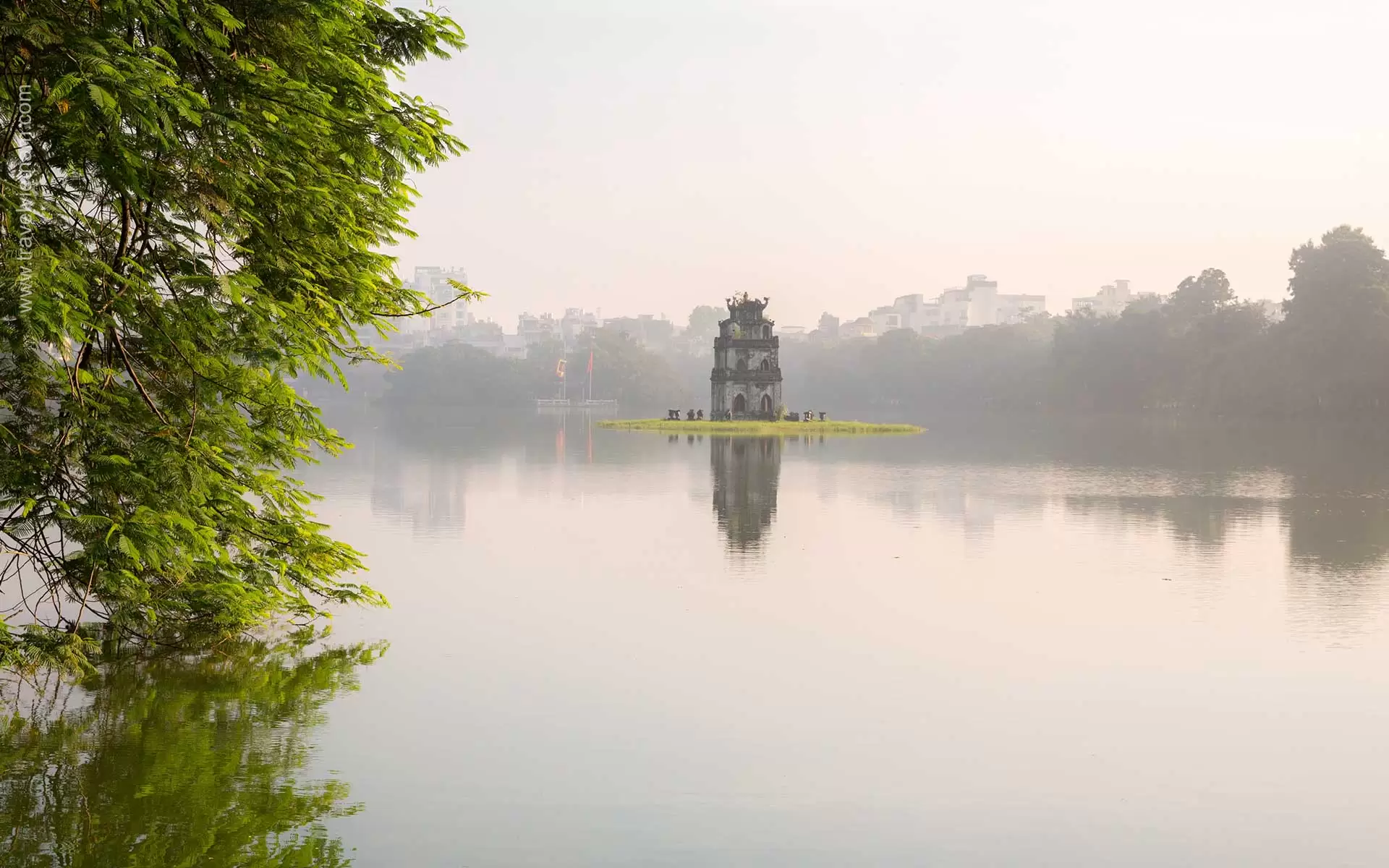
Hoan Kiem Lake – Hanoi.
In case you’re not entertained by legends don’t worry that the lake is unique for different things also. The Hoan Kiem Lake is a mainstream among Hanoians as a social event place for families, nature lovers and for the youth to hang out with friends. If you want to experience in the way as locals do, arrive at 6 a.m and practice Tai Chi with them.
An ideal time to visit is from Fridays to Sundays in the fact that the traffic is prohibited from 7 p.m to midnight transforming it into a peaceful oasis.
Read more about Hoan Kiem Lake
3. Visit Ngoc Son Temple
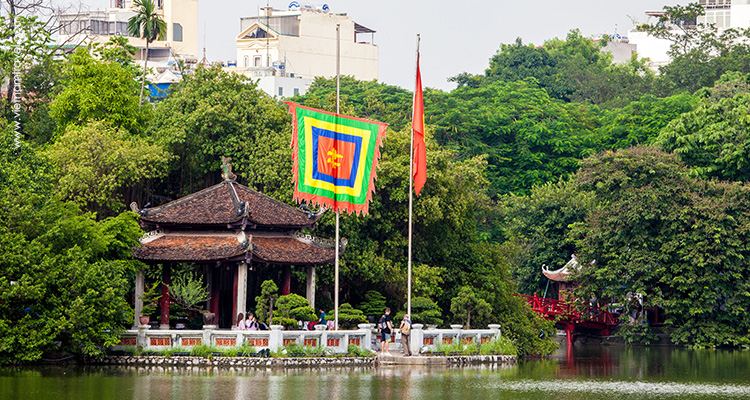
In the event that the lake itself isn’t sufficient to meet your interest, then try to visit the Ngoc Son Temple, a pagoda encompassed by the Hoan Kiem lake. It was built to commemorate 13th-century Tran Hung Dao, a valiant military leader who battled against the Yuan Dynasty. The island on which the pagoda is built is known as Jade Island and is accessible by the renowned Rising Sun Bridge. The bridge is worked out of wood and colored red in a traditional Vietnamese manner. The pagoda and lake are likely the most well-known spots to visit in Hanoi. It’s one of those spots where you simply come to set down, unwind and appreciate the merry calm.
Address: Dinh Tien Hoang, Hang Trong, Hoan Kiem.
Opening hours: Monday – Friday: 7 a.m to 6 p.m; Saturday and Sunday: 7 a.m to 9 p.m.
Entrance fee: 30,000 VND/person.
4. Shopping at Dong Xuan Market
The Dong Xuan Market, established in the late 19th century, can be found in a four-story communist style building on the edge of the Old Quarter. Dong Xuan Market in Hanoi is recognized as the most crowded market which provides a variety of wholesale products, from food such as candy, wine, even fresh and dried seafood to clothes, shoes, bags, hats, etc. At Dong Xuan Market, goods are classified according to the selling area, so it is very convenient for customers to find and buy goods.
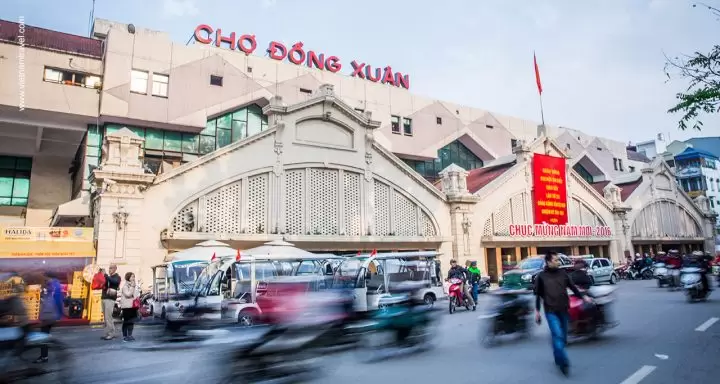
Dong Xuan market, Hanoi.
Moreover, if you are in Hanoi on the weekend, you will have a chance to visit Dong Xuan night market which is an air-opened walking market, just open from 7 p.m to 12.30 a.m every Friday, Saturday, Sunday. The market is organized on the streets from Hoan Kiem lake, through Hang Ngang, Hang Dao and Hang Duong street. The distance from the beginning place to the finishing one is about 2 kilometers.
Address: Dong Xuan, Hoan Kiem.
Opening hours: Daily: 6 a.m – 6 p.m.
5. See St Joseph’s Cathedral in the Old Quarters
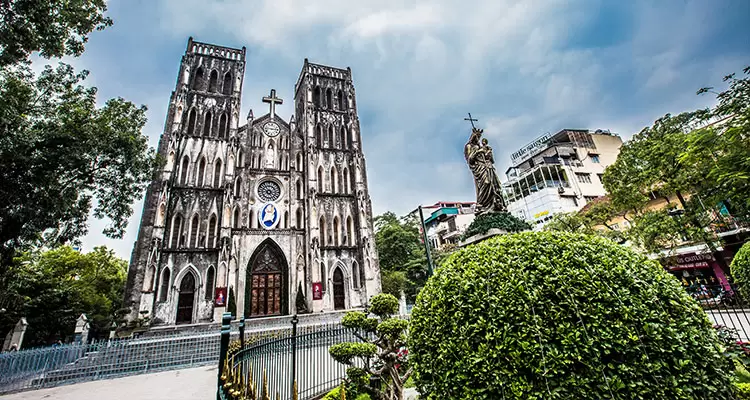
St Joseph’s Cathedral is a combination of Vietnamese and Western architecture. It was built around 120 years ago, after the French army conquered Hanoi.
The architecture of the cathedral obviously follows the rule of the Gothic style of the Paris Cathedral. The appearance of the cathedral, the doors, the stained glass windows and the religious paintings all follow Western style. But the interior is decorated in Vietnamese style, with dominating colors of yellow and red.
Address: 40 Nha Chung, Hang Trong, Hoan Kiem.
Opening hours: Monday – Saturday: 8 a.m – 11 a.m, 2 p.m – 8 p.m, Sunday: 7 a.m – 11.30 a.m, 3 p.m – 9 p.m.
Entrance fee: Free of charge.
6. Watch A Show at The Opera House
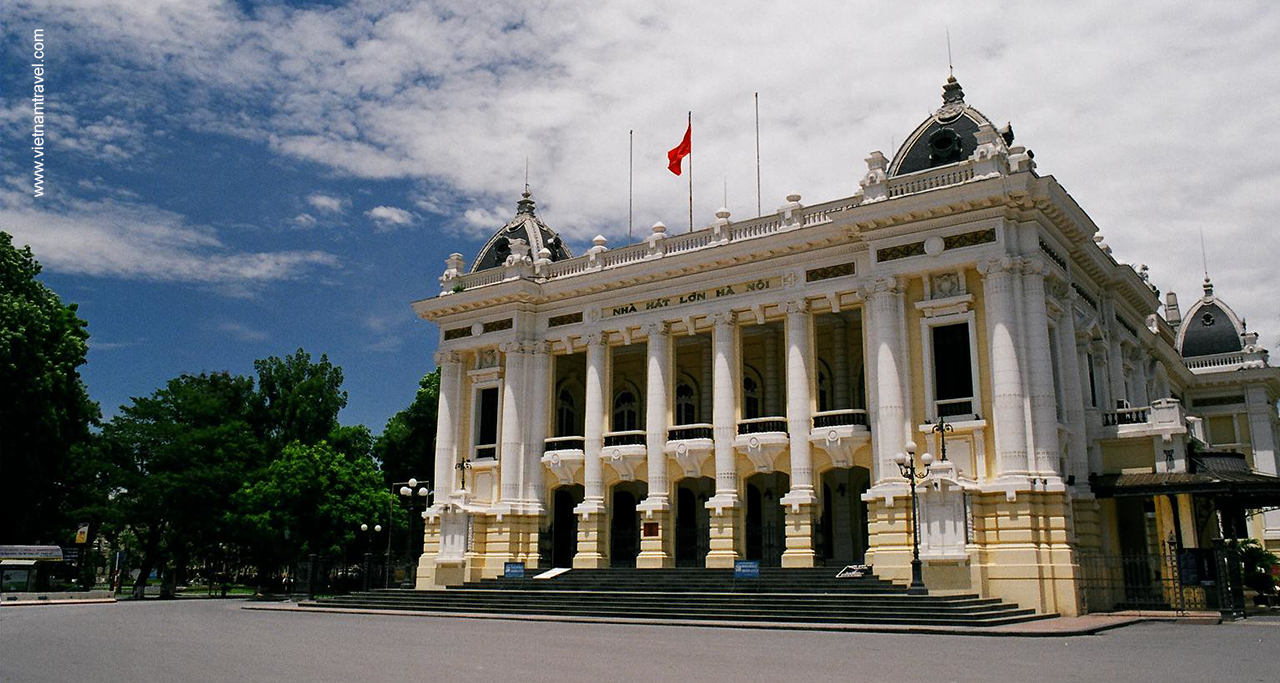
This opera house’s architecture was modelled after Paris’s Palais Garnier. The Hanoi Opera House follows the European style. It has Italian marble floors, ceilings decorated with French murals and copper chandeliers.
It is recognized as one of the most famous architectural and cultural landmarks in Hanoi. Nowadays, it has a strong cultural influence and is a centre for art performance and concerts.
Address: 01 Trang Tien, Phan Chu Trinh.
Opening hours: Monday & Friday: 10.30 a.m – 11 p.m.
Price Range: from 300,000 VND/ticket.
7. Watch a Water Puppet Show
It is an ancient art form dating back to the 11th century. When the rice fields were flooded, the farmers would draw entertainment from the catastrophic situation. They would stand in the water and attach puppets on fishing rods and had them perform over the water surface.
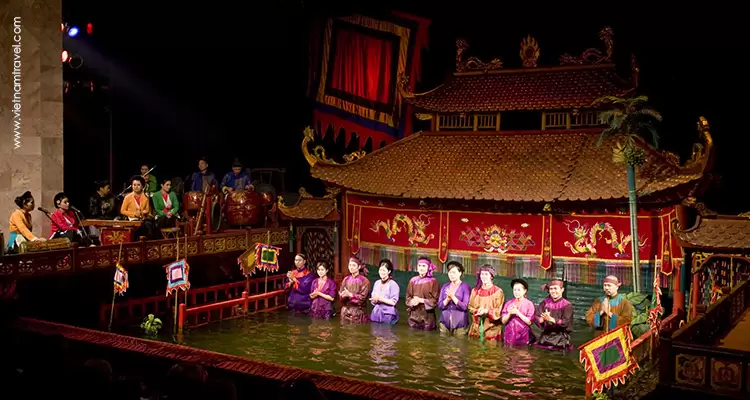
Nowadays, shows are performed at a contemporary theatre in a pool as the stage for the puppets. The puppets are controlled by eight puppeteers hiding behind a bamboo screen. The shows are usually short sketches or they perform some Vietnamese legends such as the legend of the Restored Sword of King Le Thai To and the giant golden tortoise. The live music plays an important part in the performance with singers yelling out words of encouragement to the puppets. This is something unique to Vietnamese culture, a highlight not to be missed!
Price Range: VND 100,000/person.
8. Don’t miss the Vietnamese Women’s Museum
The narratives focus on their role in society, the obstacles they overcame as society changed, and an abundance of information on everyday life, such as marriage, motherhood, fashion, and life-changing rituals. One of the most interesting exhibits focuses on the position women played in Vietnam’s wars.
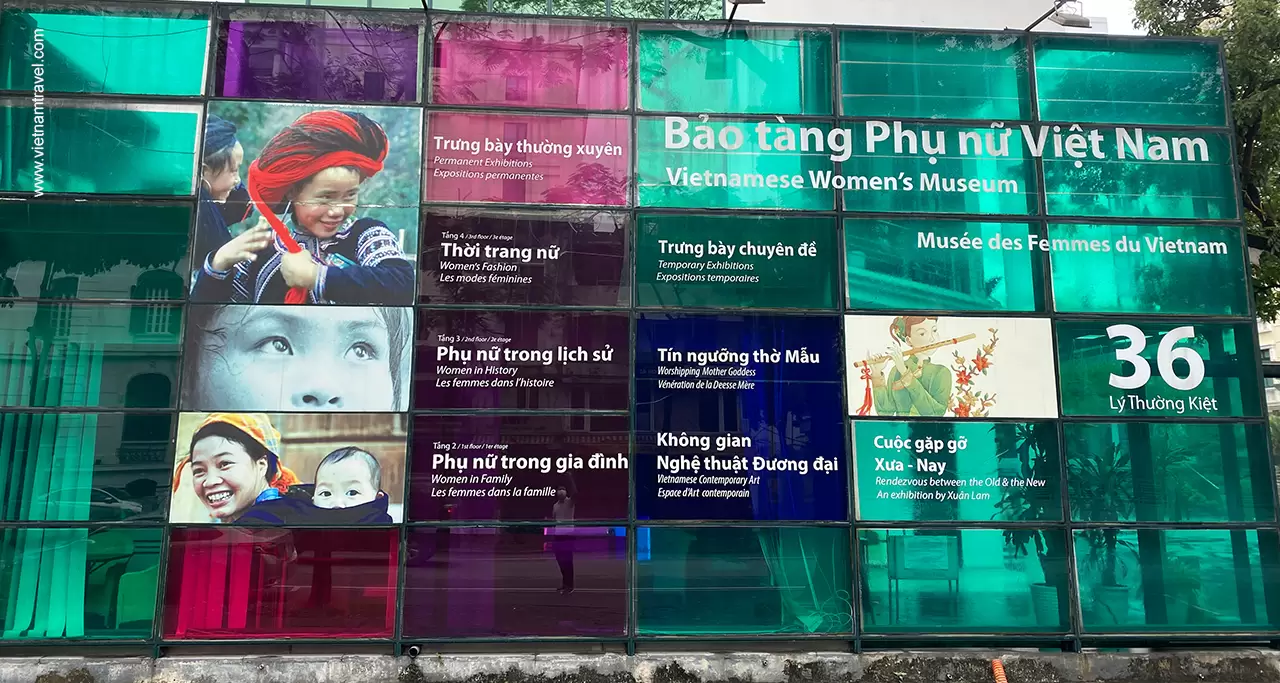
The museum has displayed a lot of information about all of its exhibits in French and in English. Historic relics which include Taoist books (among other impressive collected artifacts) give an in-depth insight into a better understanding of the women of Vietnam.
This wonderful modern museum offers a beautiful tribute to Vietnamese women throughout history. It is operated by the Women’s Union of Vietnam. The stories shown in the museum focus on women’s role in society, the impediments they overcame and many information on everyday life such as rituals, marriage, motherhood and dress.
Address: 36 Ly Thuong Kiet, Hang Bai, Hoan Kiem.
Opening hours: Tuesday – Sunday: 8 a.m – 5 p.m.
Entrance fee: 30,000 VND/person.
9. Visit the Ho Chi Minh Mausoleum
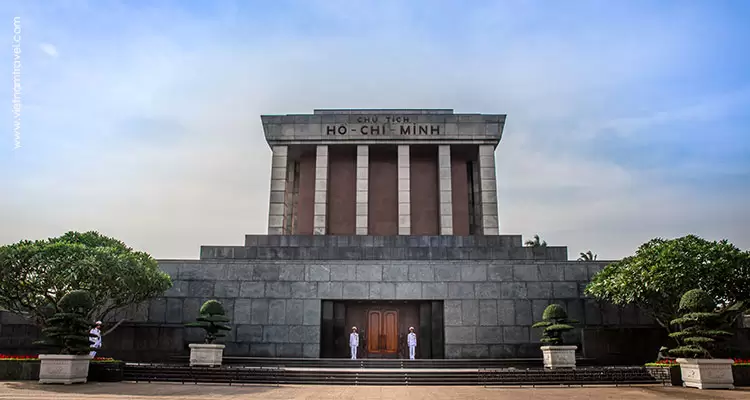
This is the resting place of the President Ho Chi Minh, who read the Declaration of Independence and established the Democratic Republic of Vietnam in 1945. The Ho Chi Minh Mausoleum was inspired by Lenin’s Mausoleum (in Moscow) but with a Vietnamese propensity. The exterior of the mausoleum is made of grey granite while the interior is black, grey and red polished stone. All of the material used for construction was purchased from all over Vietnam. Fauna from different regions of Vietnam surrounds the mausoleum. The embalmed body of Ho Chi Minh is located in the central hall of the mausoleum, protected at all times by a military guard.
Address: 2 Hung Vuong, Dien Ban, Ba Dinh.
Opening hours: From April to October: Tuesday – Thursday 7.30 a.m – 10.30 a.m, Saturday & Sunday 07.30 a.m – 11.00 a.m. Other months: Tuesday – Thursday 8 a.m – 11 a.m, Saturday & Sunday 8 a.m – 11.30 a.m.
Price: 40,000 VND/person.
10. Visit nearby One Pillar Pagoda
According to the tale, an hairless Emperor dream that he met a goddess of sorts name Avalokiteshvara handed him with a baby boy while seated on a lotus flower. Emperor Ly Thai Tong wanted the pagoda to be built as the lotus blossom and that is why it was built on a single pillar. The lotus blossom also symbolizes enlightenment in Buddhism.
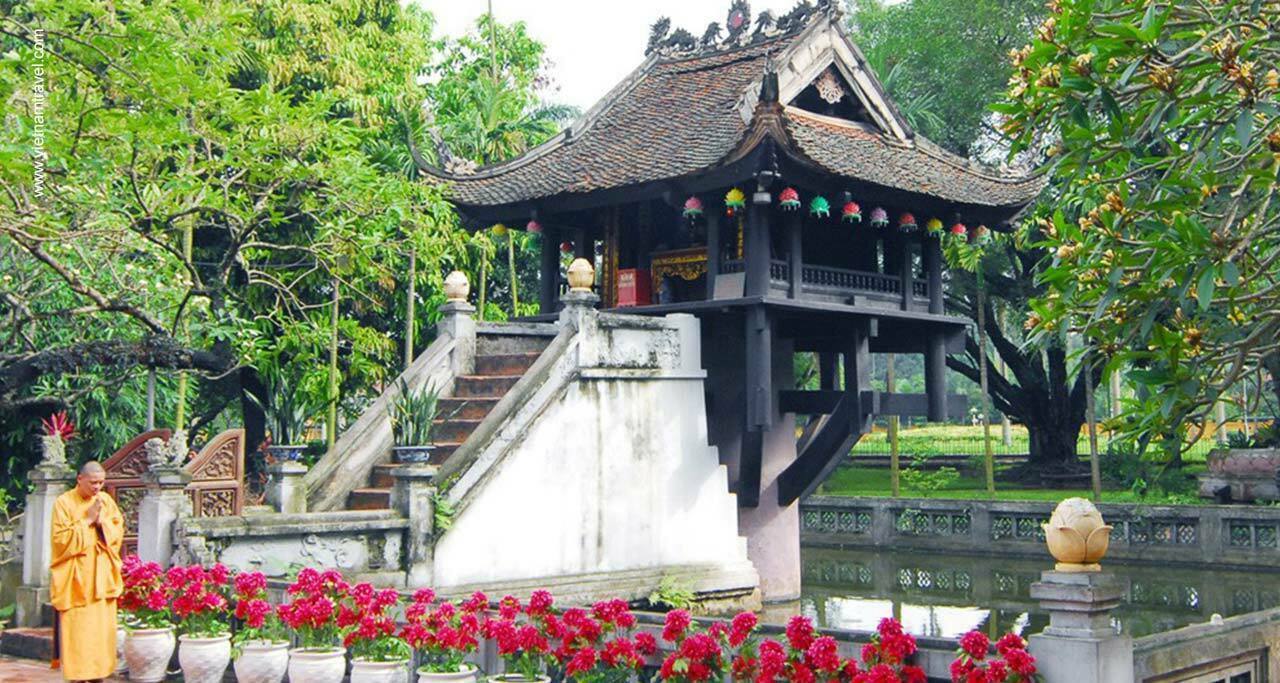
One Pillar Pagoda, Hanoi.
Nowadays, the wooden pagoda is supported by a concrete pillar as a replacement for the original one. The original wooden pillar was destroyed by the French. The legend of the pagoda had made it one of the main Hanoi attractions.
Address: Chua Mot Cot, Doi Can, Ba Dinh.
Opening hours: Every day except Monday and Friday afternoon: morning: 8 a.m – 11.30 a.m; afternoon: 2 p.m – 4 p.m.
Entrance fee: Free of charge.
11. Visit The Temple of Literature
The Temple of Literature is often considered as one of the most visited tourist attractions. In 1070, it was built as a university and was dedicated to Confucius and scholars. Fortunately, the building is significantly preserved and is an excellent illustration of traditional Vietnamese architecture.
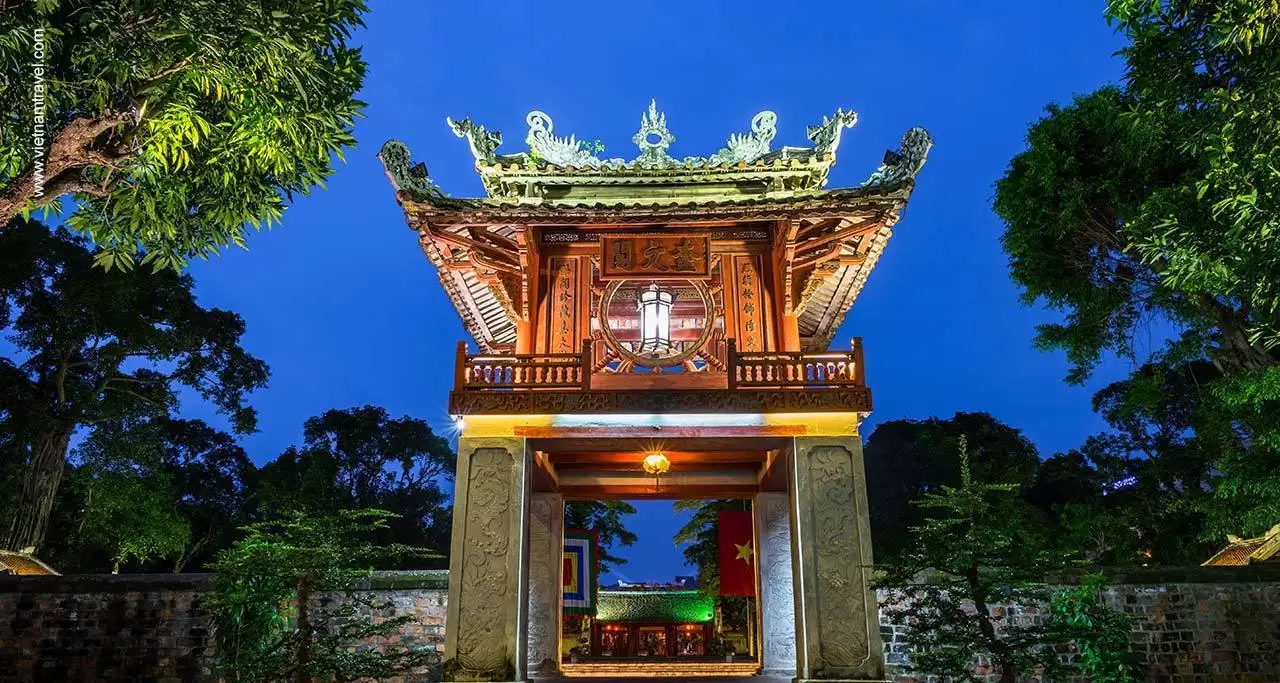
Temple of Literature, Hanoi.
The temple presents an abundance of literature, turtle steles as well as the Well of Heavenly Clarity. It contributes a lot to education and literature of Vietnam. The most acclaimed prize for the most successful scholars was to have their names engraved onto a stone stele on top of a stone turtle. Today students usually come and pray for their good grades.
Address: 58 Quoc Tu Giam, Van Mieu, Dong Da.
Opening hours: From November to March: 8 a.m – 5 p.m. Other months: 7.30 a.m – 6 p.m.
Entrance fee: 30,000 VND/person.
12. Explore Hoa Lo Prison (The Hanoi Hilton)
The Hoa Lo Prison as known as the “Hanoi Hilton” will make you experience a range of emotions from disgust, sorrow to outrage at how something like this was allowed to happen. The museum shows and educates on the sufferings of the Vietnamese revolutionaries imprisoned under the French occupation in the early 20th century. Everything you see in the museum is just a glimpse into the prison, as most of the prison complex was destroyed in the 1990s to make way for the Hanoi Tower.
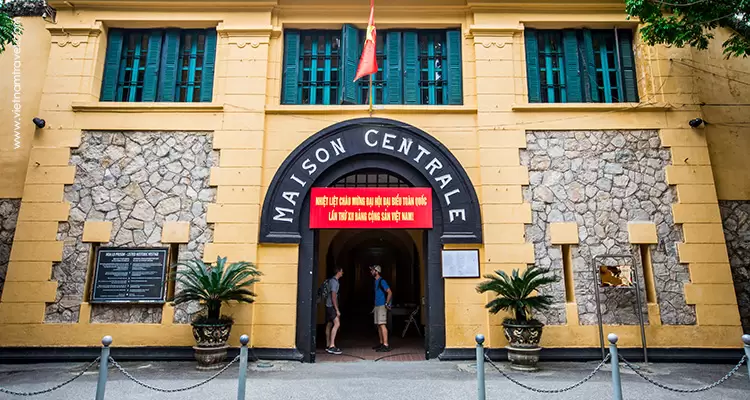
It is strange to have a prison built in the city center. The idea of the French colonial administrators was to make an example for Vietnamese fighters to gain independence. Almost all exhibits show the prison used the Vietnamese uprising against the French for independence. The museum is also the place to store the most terrible relics, the French guillotine on the Vietnamese rebels.
Address: 1 Hoa Lo, Tran Hung Dao, Hoan Kiem.
Opening hours: every day, from 8 a.m – 5 p.m.
Entrance fee: 30,000 VND/person.
13. Appreciate the works in the Vietnam Fine Arts Museum
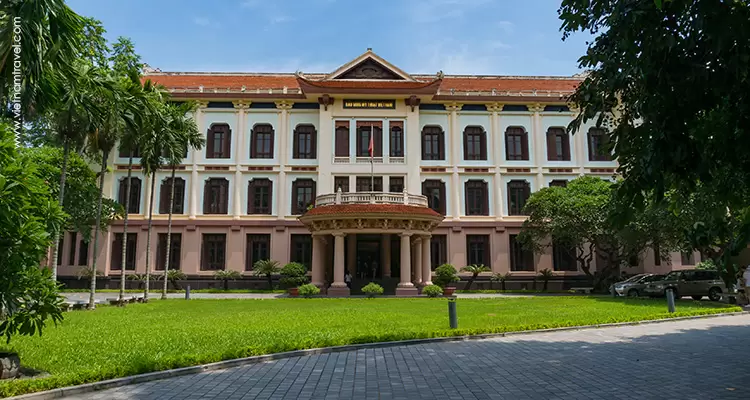
This wonderful museum, which were once the French Ministry of Information, contains some of the most remarkable art through the ages, traditional applied art, folk art and Vietnamese ceramic art from 11th century to 20th century. This is the place to visit, truly appreciate and understand the entire history of Vietnamese fine arts. Fortunately, most of the exhibits have English explanations.
Address: 66 Nguyen Thai Hoc, Ba Dinh.
Opening hours: every day, from 8.30 a.m – 5 p.m.
Entrance fee: 40,000 VND/person.
14. Learn about ethnic history at the Vietnam Museum of Ethnology
The Vietnam Museum of Ethnology acts as a guardian of the cultural diversity of different ethnic groups in Vietnam. Many of those communities are working together with the museum. They have collected work, participated in the exhibition’s preparation process for the purpose of preserving cultural heritage and displaying it in a rightful and authentic way.
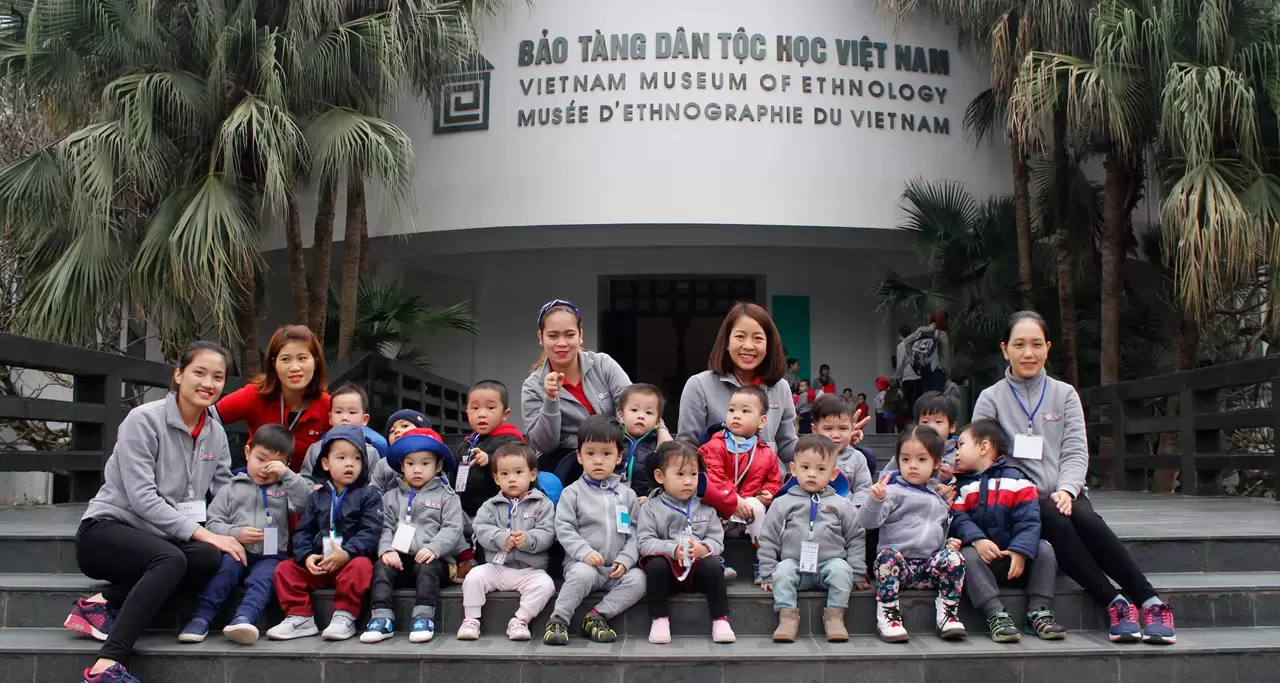
The popularity of the Museum is mainly due to the contribution and participation of communities. The extensive collection of Vietnam’s ethnic minorities displays tribal art, artifacts, and objects used in everyday life.
Address: Nguyen Van Huyen, Quan Hoa, Cau Giay.
Opening hours: Tuesday – Sunday, from 8.30 a.m – 5.30 p.m.
Entrance fee: 40,000 VND/person.
15. Visit Thang Long Imperial Citadel
Thang Long Imperial Citadel, which was recognized by UNESCO as a World Heritage Site in 2010, is an intriguing relic of Vietnamese history and represents its historical and cultural importance. Many artefacts and items dating back to between the 6th and 20th centuries were excavated in 2004, including foundations of old palaces, ancient roads, ponds and wells.
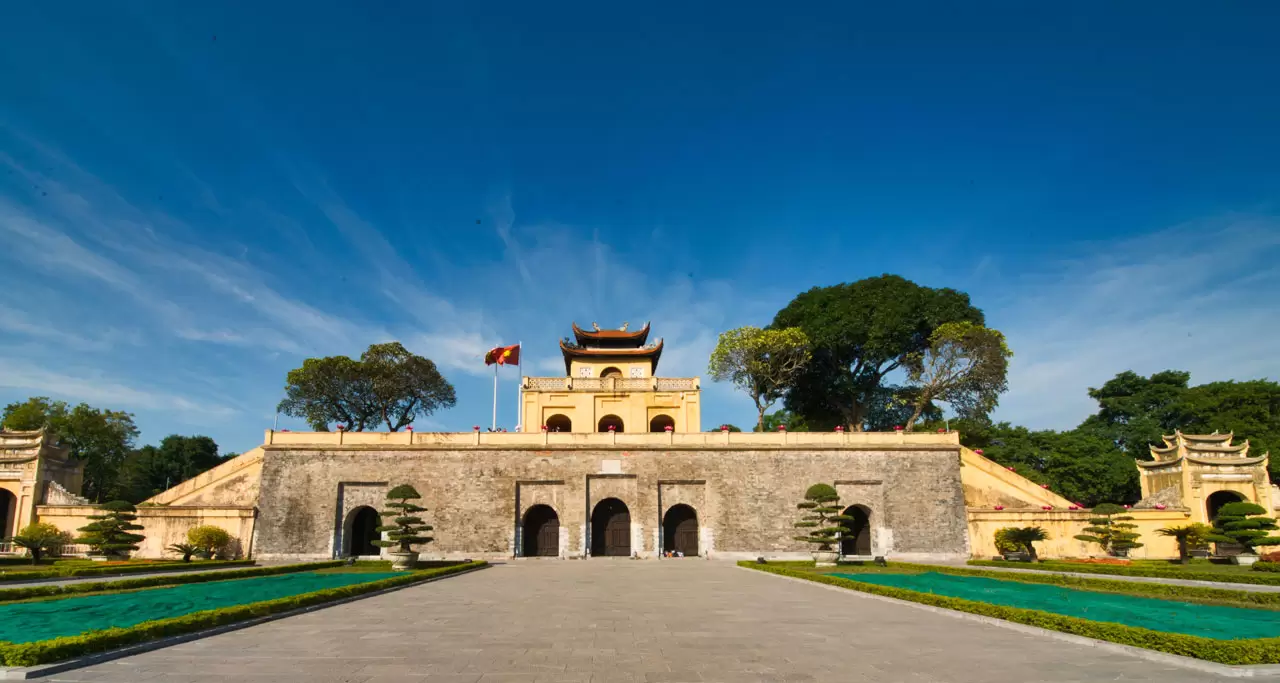
On these findings, archaeologists also found bronze coins, ceramics and pottery from China and many places in Asia, all of which indicate a strong trading relationship in the region. Visitors should head for the showroom with interesting excavation and simulation of the citadel itself.
A remarkable attraction in the Thang Long Imperial Citadel is the Hanoi Flag Tower, a renovated 40-metre-tall stone fortress offering expansive views of Ba Dinh Square and Hanoi City Centre.
Address: 9 Hoang Dieu, Dien Bien, Ba Dinh.
Opening Hours: Tuesday – Sunday 8 a.m – 5 p.m.
Entrance fee: VND 30,000/person.
16. Enjoy some peace and quiet at West Lake
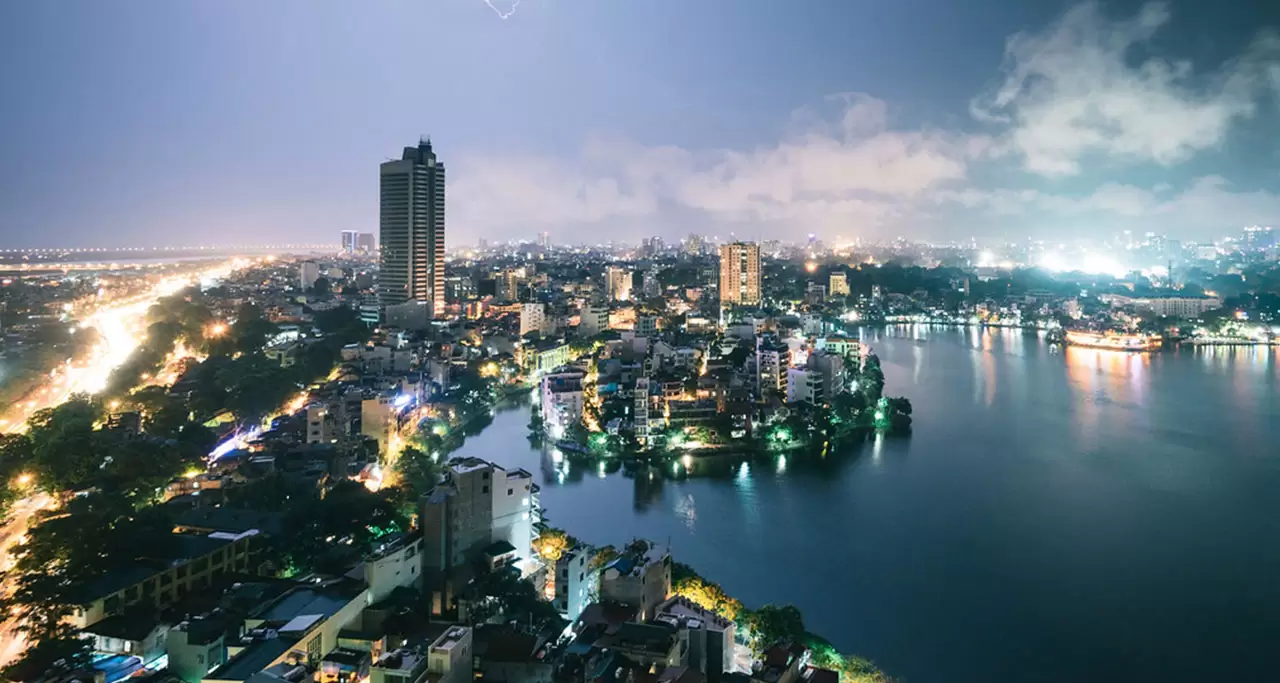
West Lake is the largest lake in Hanoi. It is 15 km in circumference and is a quite popular destination as it creates a nice change from the busy pace of the Old Quarter. You will have an opportunity to visit temples off the beaten path or to enjoy a cup of coffee or a refreshing beer while admiring the lake. You can navigate around the lake by bicycle and take a break at one of the roadside restaurants.
17. Admire Tran Quoc Pagoda
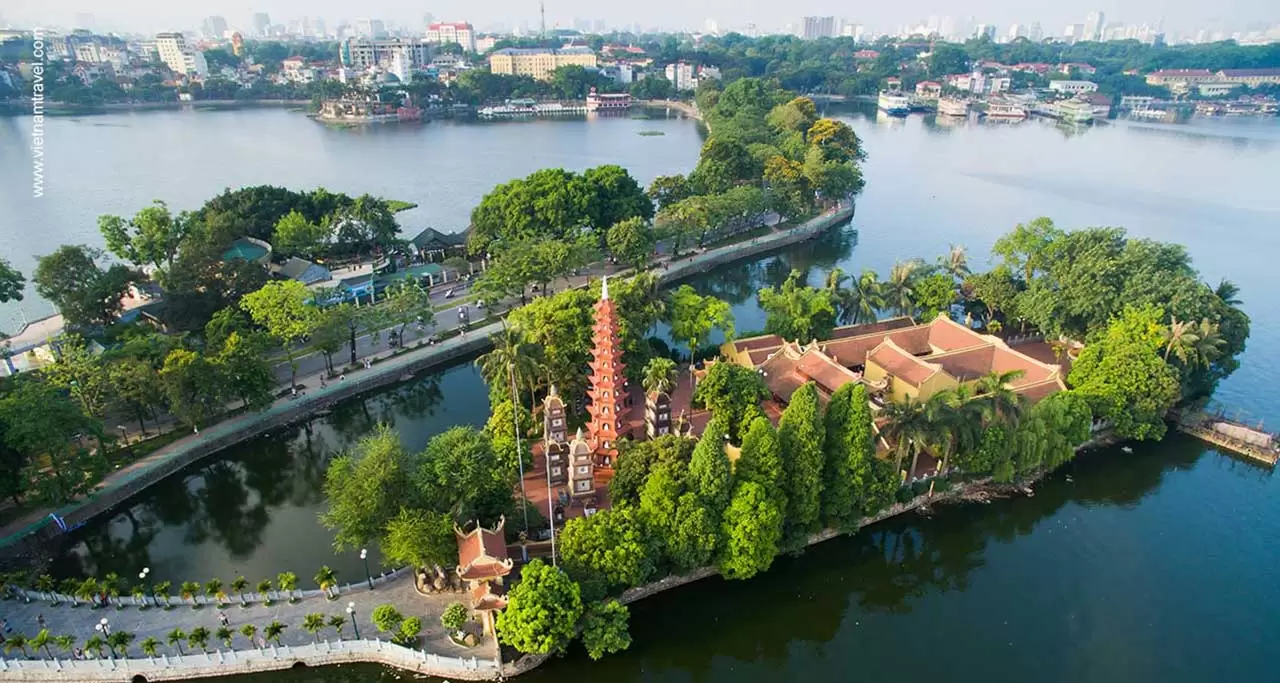
This is the oldest pagoda in Hanoi dating back to the 6th century. It is located on an islet inside West Lake but was originally located on the bank of Red River but due to the invasion of the river, it was relocated in the 17th century. It is one of the most photographed attractions in Hanoi because of the lush fauna around the pagoda.
Address: Thanh Nien, Yen Phu, Tay Ho.
Opening hours: every day, from 8.00 a.m – 4.00 p.m.
Entrance fee: Free of charge.
18. Check out the 4-kilometer ceramic mosaic wall
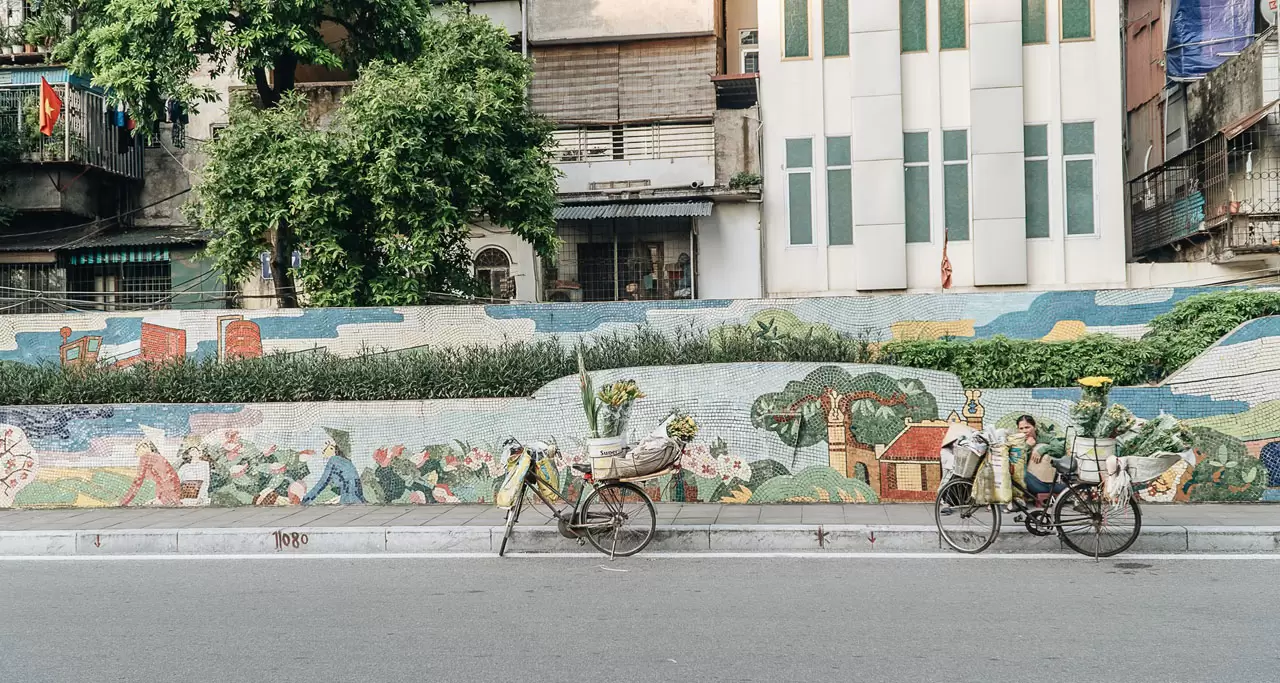
Another thing Hanoi can be proud of is the world’s largest ceramic mosaic wall located along the Red River. It was built to commemorate the thousand-year Hanoi in October 2010. The idea was born by journalist Nguyen Thu Thuy. Her imagination managed to transform a boring wall into a colorful mosaic picture. The theme is ‘History through pictures’. The decorative patterns used to represent a visual history of the country throughout different eras. With a rich history and folk art that can be traced back to the Stone Age, it was a logical blend of the two. The preparations began in 2007 and artists from not only Vietnam but around the world contributed to make this idea a reality.
19. Take in the views from Long Bien Bridge
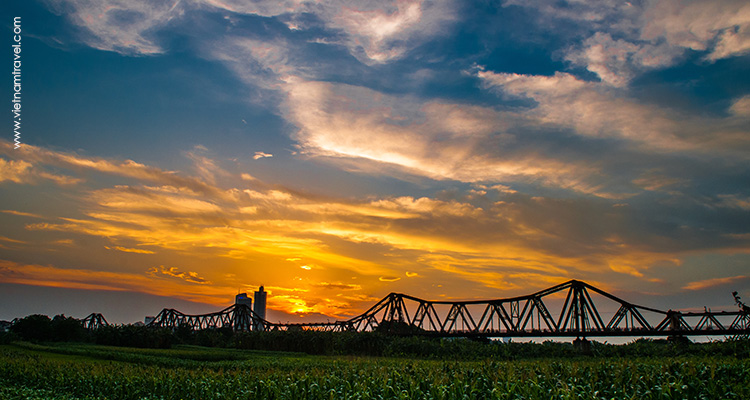
Constructed from 1899 to 1902, Long Bien Bridge was designed by architects from Paris. This is the first steel bridge across the iconic Red River and it is one of the focal points of Hanoi. It played an important strategic role during the Vietnam War and is a historically important point in the city. You should try and visit the bridge in the evening when it is illuminated over the inky sky of Vietnam. There is a pedestrian path allows you to across the bridge and street food carts that sell lot of delicious snacks.
20. Make your own pottery at Bat Trang Ceramic Village
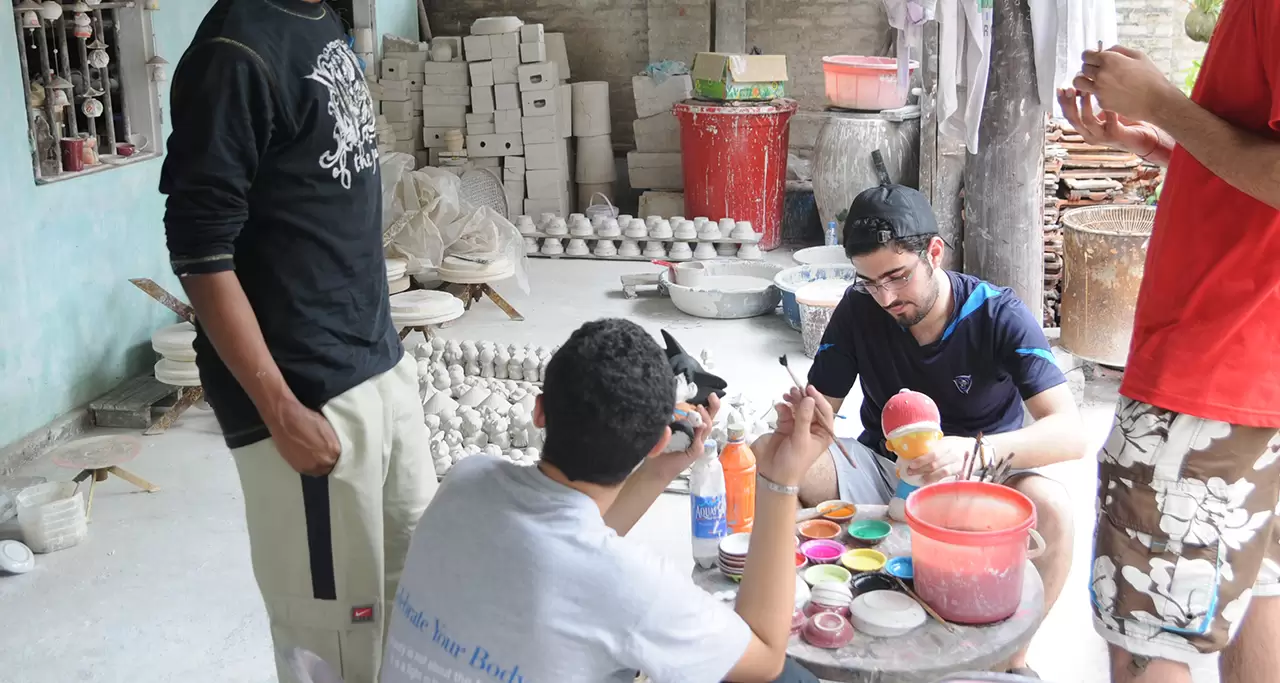
Known as a traditional village in Hanoi, Bat Trang is an attraction for local people and tourists. It is about 10km far from the city center. At shops of Bat Trang you will find ceramic products displayed in different shapes, designs, and colors with various choices, from household appliances such as pots, plates, cups to decorations, religious items, jewelry, etc. Typically, they are produced by family businesses and are reasonably priced.
You can apply for one of the ceramic workshops and create your own handmade ceramic product. Don’t worry you will be guided through the process by the shopkeeper. After being created, your own ceramic product (cup, pot, and bowls are easiest to make) takes an hour to dry and then you can decorate it with available colors.
21. Eat all of the local food!
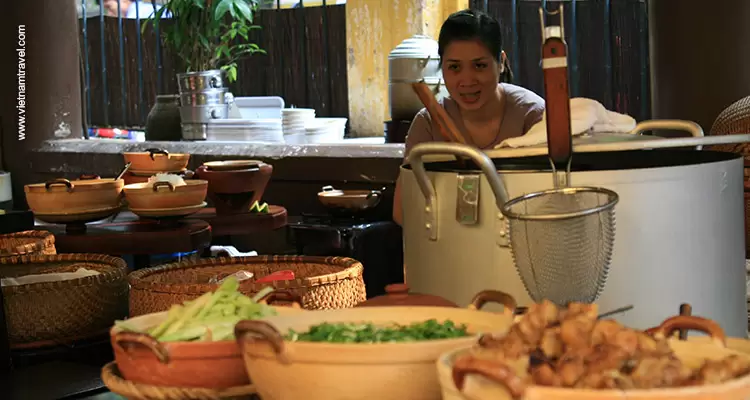
You cannot research things to do in Hanoi without thinking about what kind of food to eat. Well, our suggestion is “All of it!”. Vietnamese cuisine is based on a delicate balance of salty, sweet, sour and hot flavors. It’s almost impossible to walk in Hanoi without noticing the smell of food from the street vendor’s stand. Pho, bun cha, bun rieu cua are some of must-try dishes when you are in Hanoi. If you have a sweet tooth, definitely try the fried bananas, dessert soup or caramel pudding.
Tasting a new cuisine is not just a dish itself, it is also a part of the cultural heritage. There is no better way to discover Vietnamese delicious street food than with the help of a local!
22. Drink Bia Hoi with the locals (One of the most fun things to do in Hanoi!)
Yes, Bia Hoi. If you are a beer enthusiast, you will enjoy Vietnamese beer culture. Let us start off with the fact that Vietnam is the perfect place for a pub crawl. Bia Hoi is an insight into the beer scene of Vietnam.
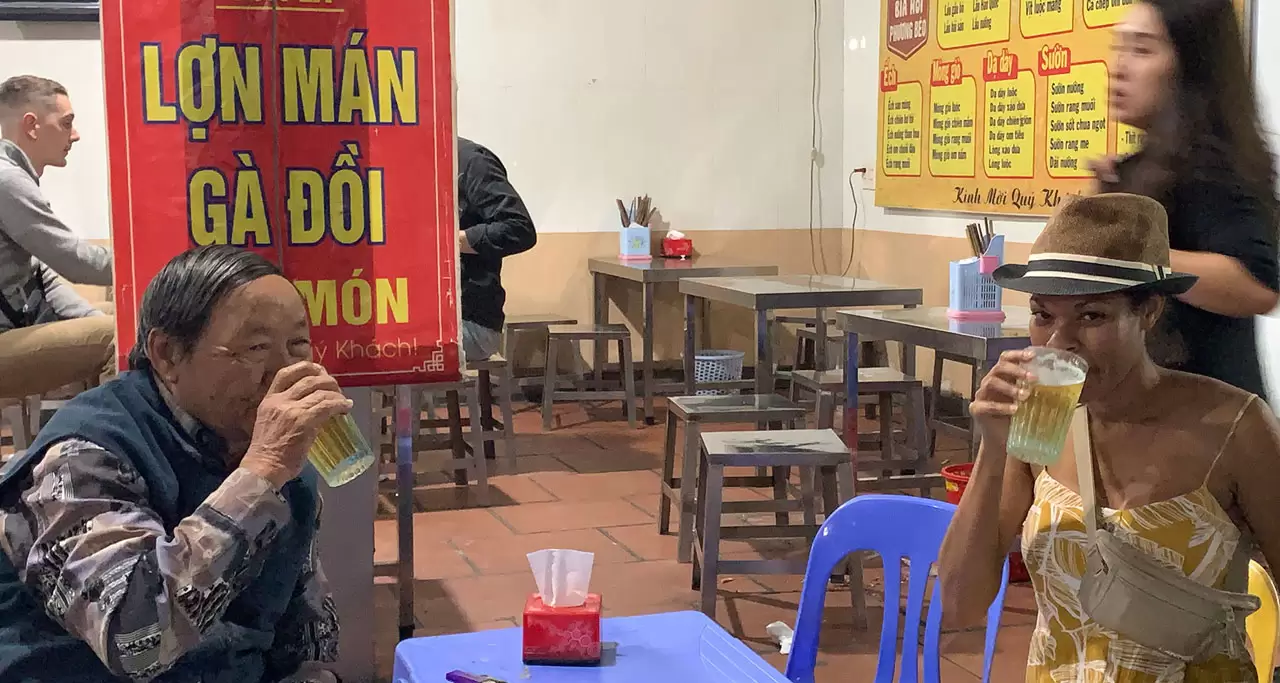
Bia Hoi is known as a street beer. It is a daily habit starting from 4 p.m, local people (and tourists) sit on plastic furniture on street corners and drink home-brewed beer. It is considered as the freshest beer because it is made without preservatives.
So if you were wondering how the world’s cheapest and freshest beer tastes like then don’t miss your opportunity! There is only one place for tourists to head to: the corner of Ta Hien – Luong Ngoc Quyen street, known as “Beer Corner” in the Old Quarter that attracts many tourists and locals.
You may like: Popular Vietnamese Drinks
23. Try the egg coffee, please!
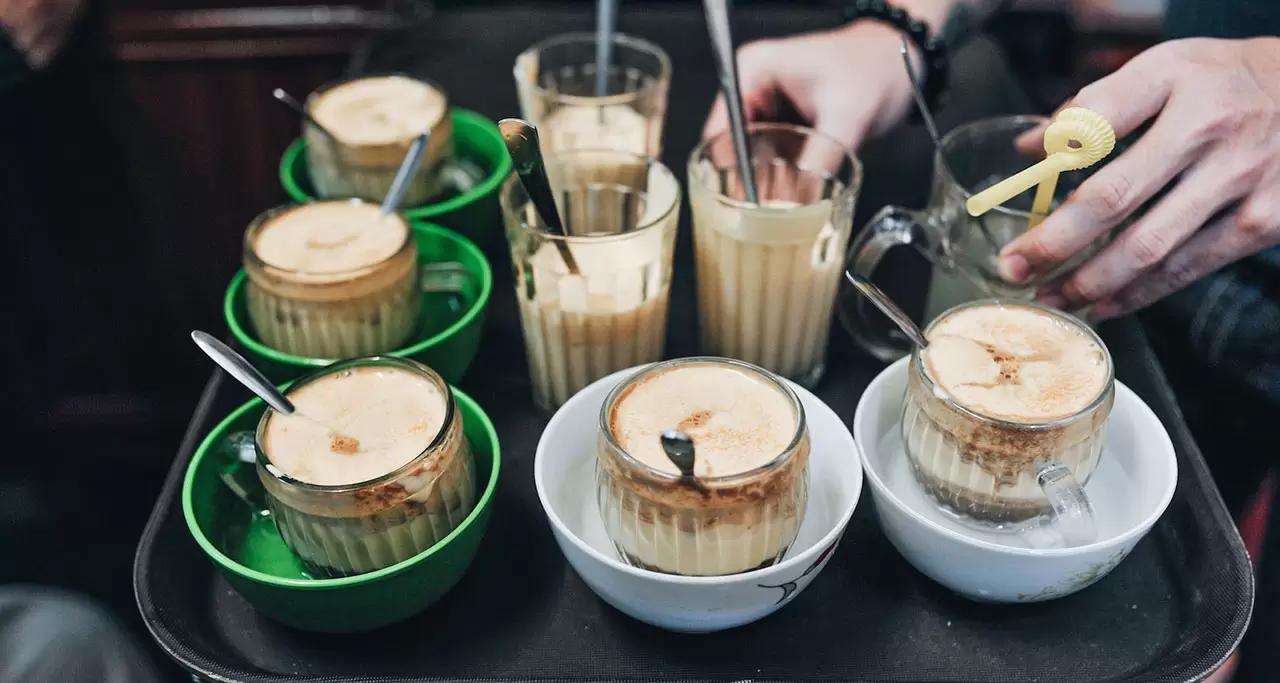
Many people may not realize that Hanoi is famous for egg coffee which may sound weird but tastes amazing. A must-try even if you are a big fan of coffee or not. The coffee is similar in taste to something like egg yolks are beaten with condensed milk until they are thick and fluffy then poured over the top of a shot of traditional Vietnamese coffee and leaves you with a smooth but powerful explosion of caffeine.
One of the best places in the city to try is Giang Cafe which has been serving this signature beverage for years.
24. Find a rooftop bar
Heavy traffic in Hanoi can be overwhelming even to locals who are accustomed to the city’s fast pace. The city becomes even more vibrant at night, filled with neon colors and street lights. Whether you are looking for a romantic vibe or hang out with friends, the best way to enjoy the enchanting night view of Hanoi is from above.
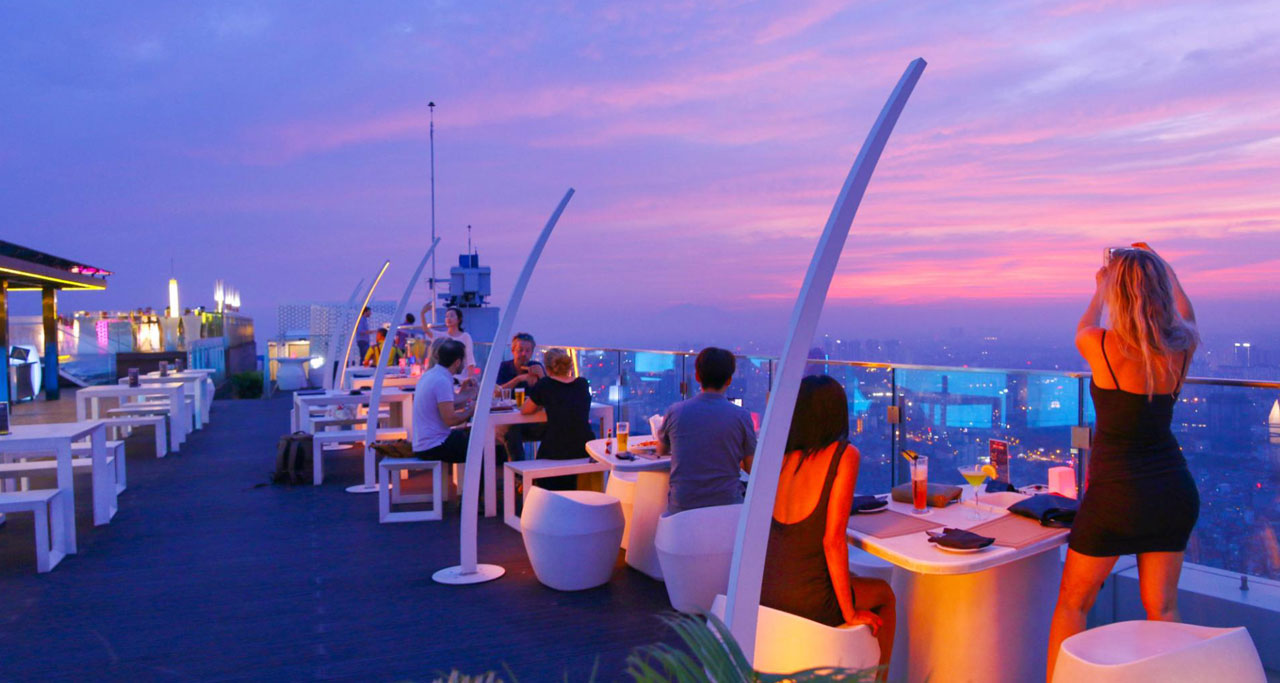
Hanoi has a lot of rooftop bars, and most of them offer the same type of atmosphere. Imagine a lounge with modern music in the background, amazing cocktails and a panoramic view of Hanoi. Enjoy a drink at a rooftop cafe and watch Hanoi from above is one of the best experience.
25. Join a cooking class
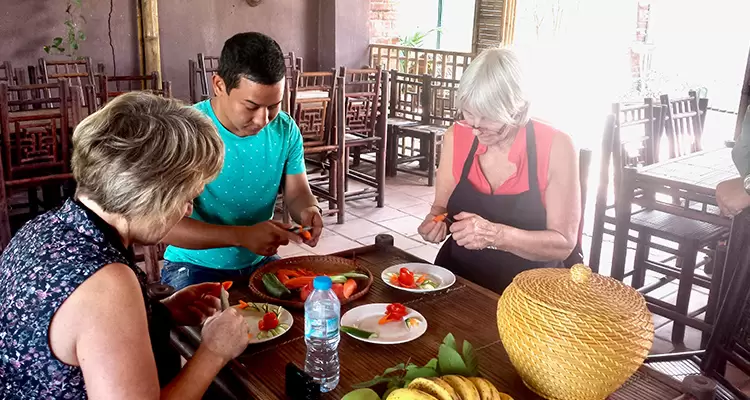
If you followed our previous suggestion which is “Eat all of the food”, you would be already mesmerized by the authentic Vietnamese food. The good news is that Vietnamese cuisine is very simple. You don’t need to be a chef to prepare your favorite Vietnamese dishes, but you do need the tips to make them as authentic and flavorful as real. There are many different classes on offer, you can learn about vegetarian, seafood, pho and bun cha. A lot of those cooking classes even have a tour to the local market so you will have a chance to show your bargaining skill as well.
Price: from $30-$100/person.
Check our Hanoi Cooking Class!
So are you ready for Hanoi now?
Hanoi will not only surprise you but also steal your heart. Get your bags packed! We hope reading this post has given you a better understanding of what to expect when you visit Hanoi. If you have any further questions about Hanoi tours, please contact Vietnam Travel and we’ll get back to you!
